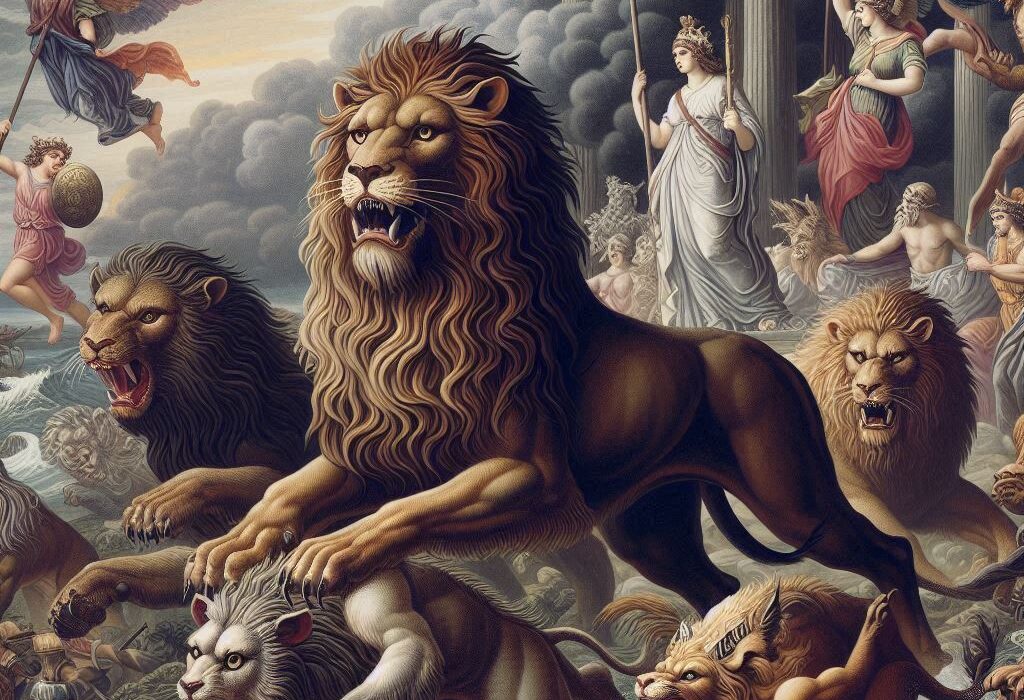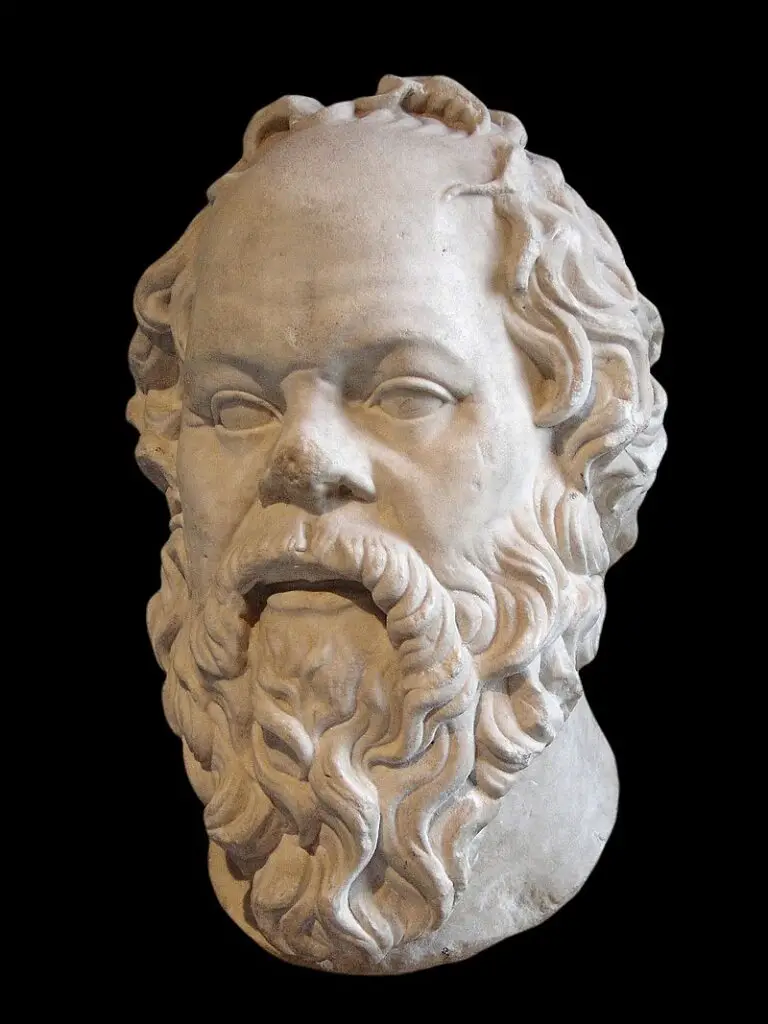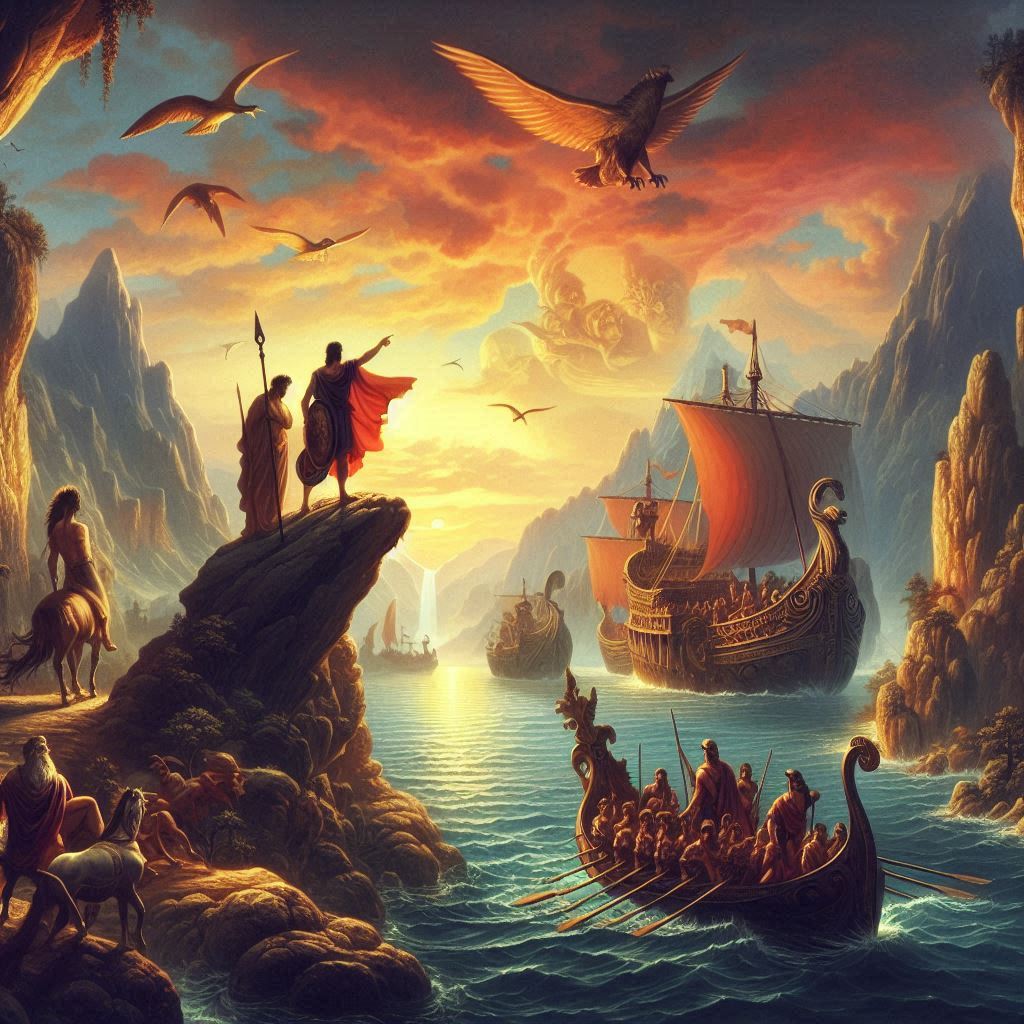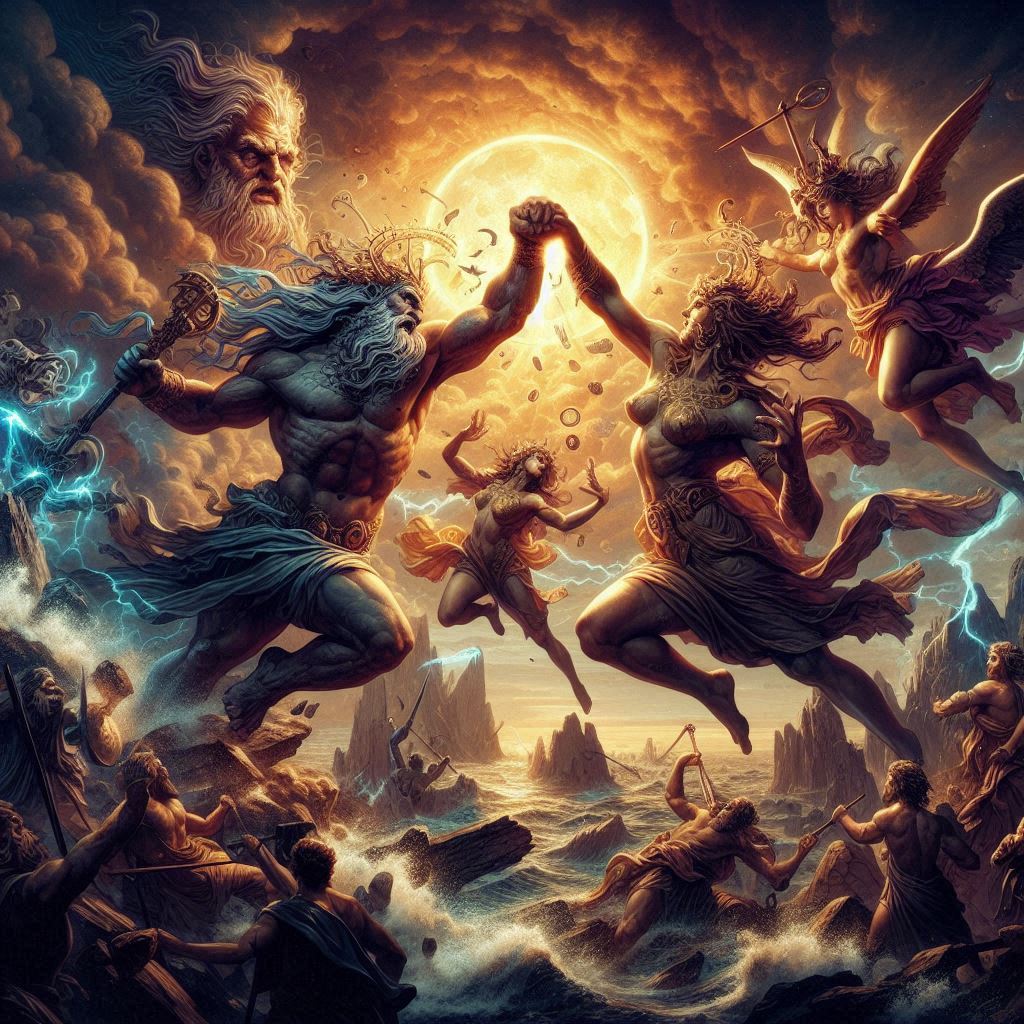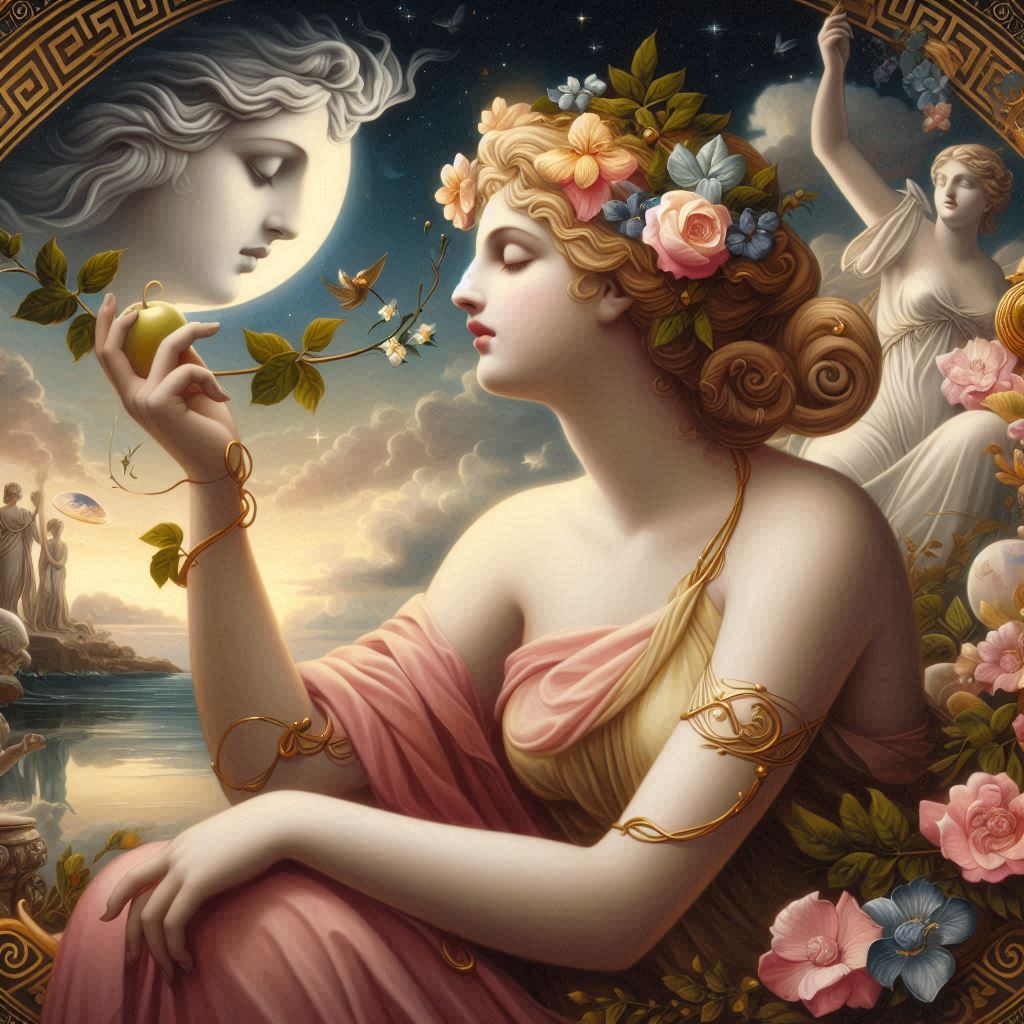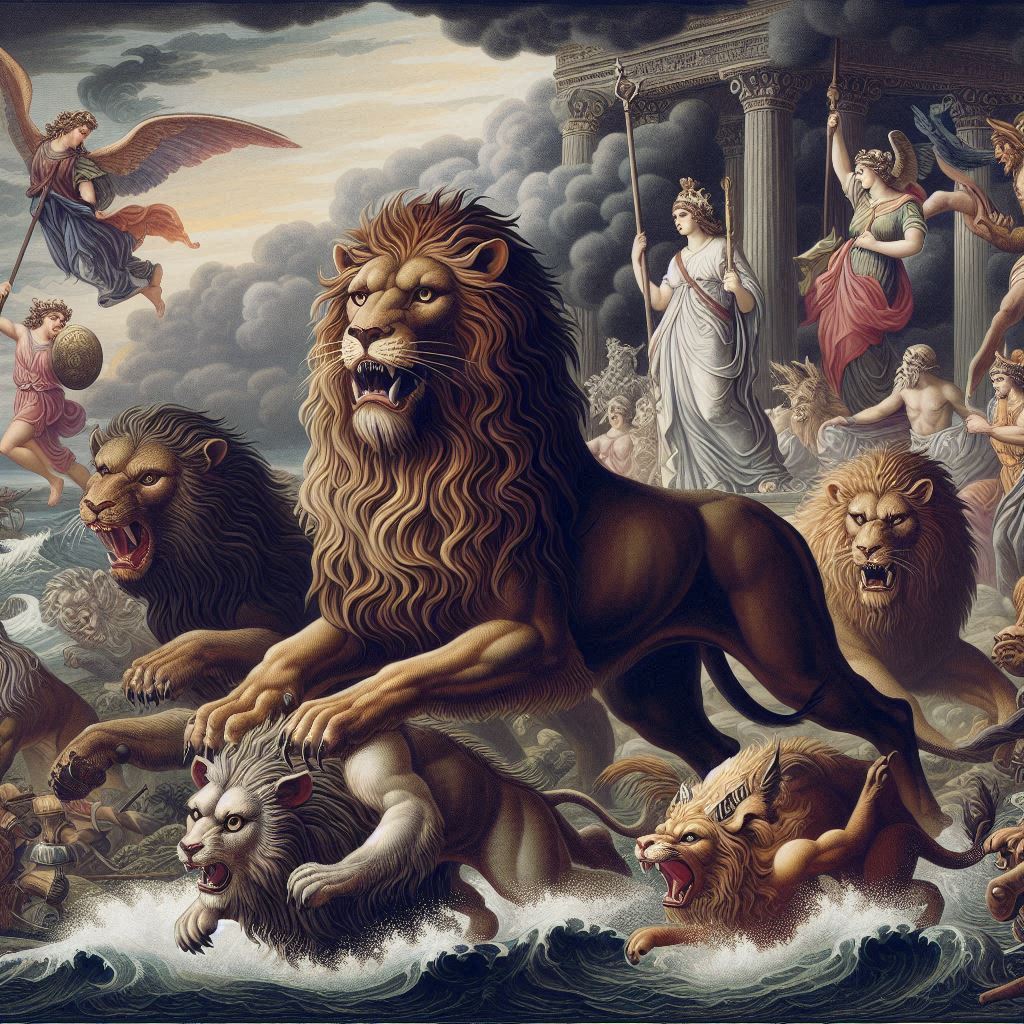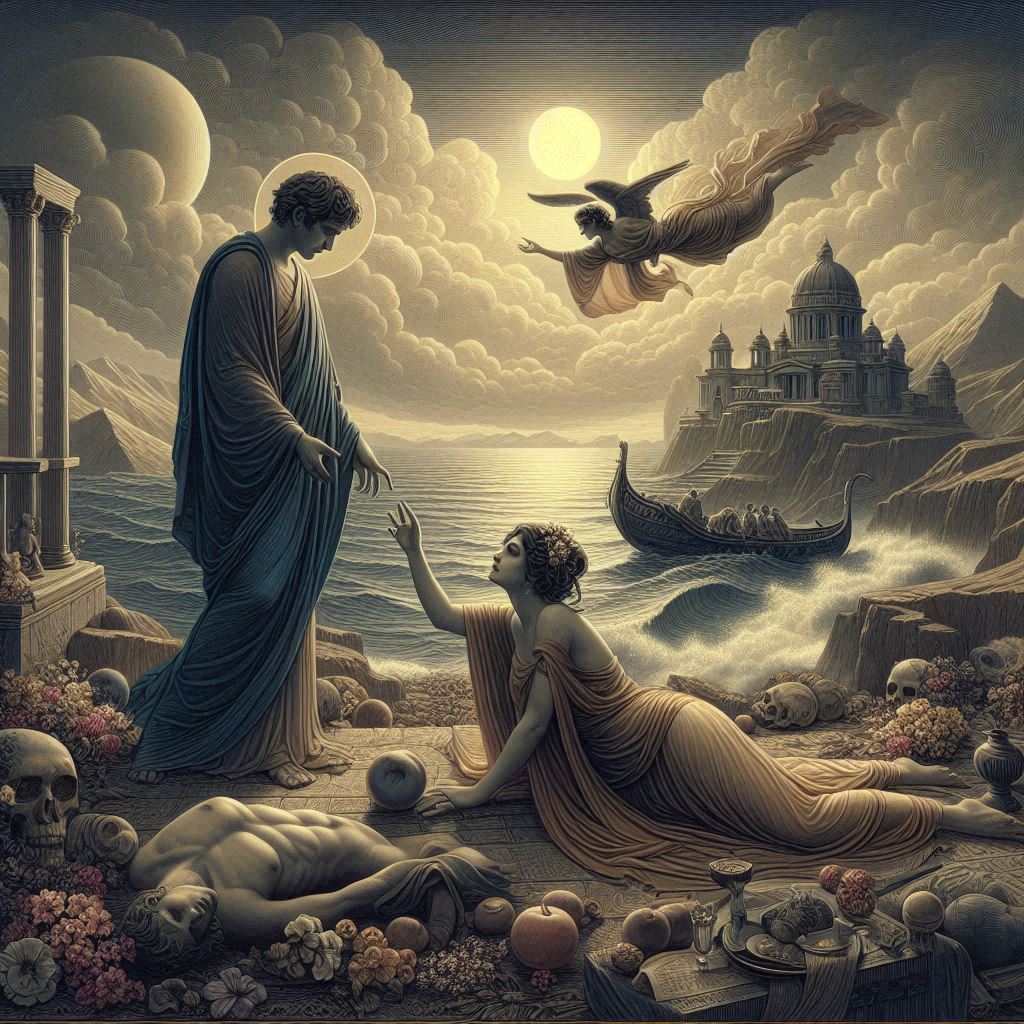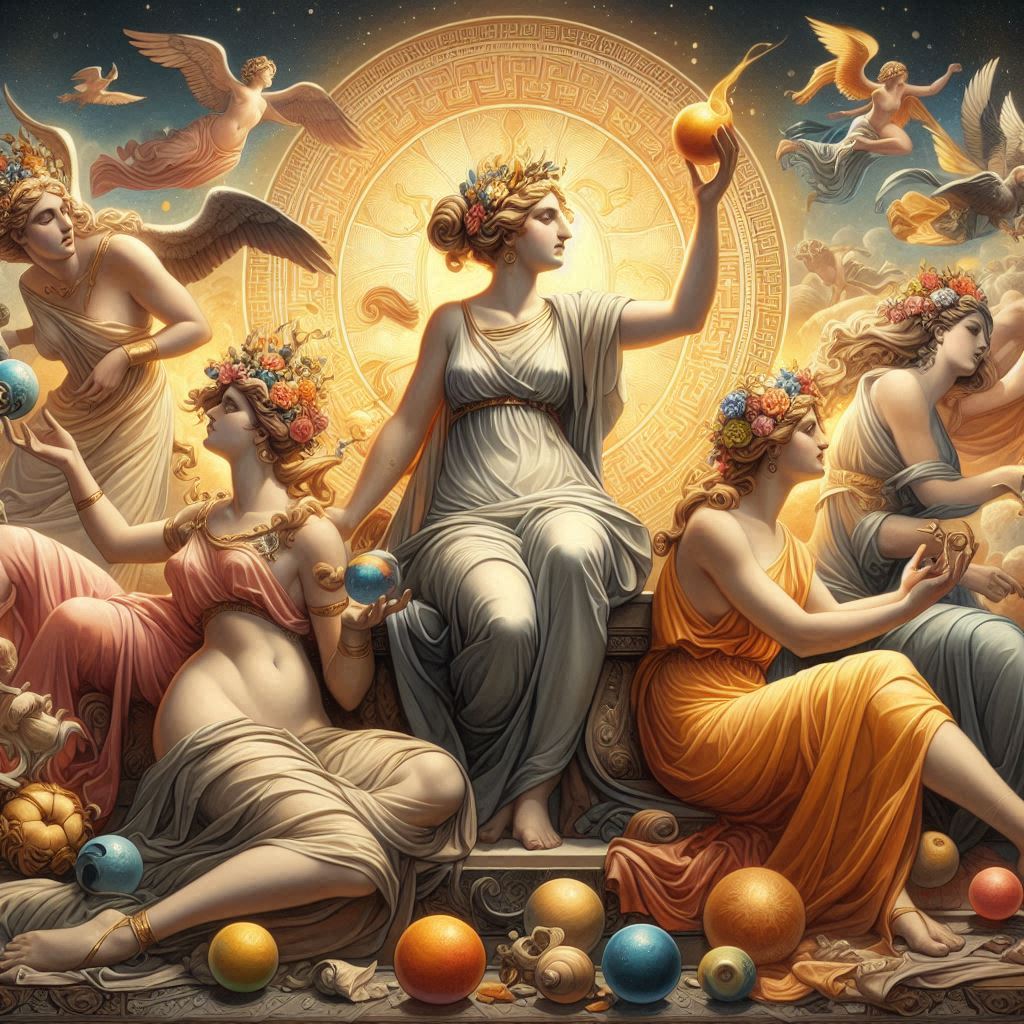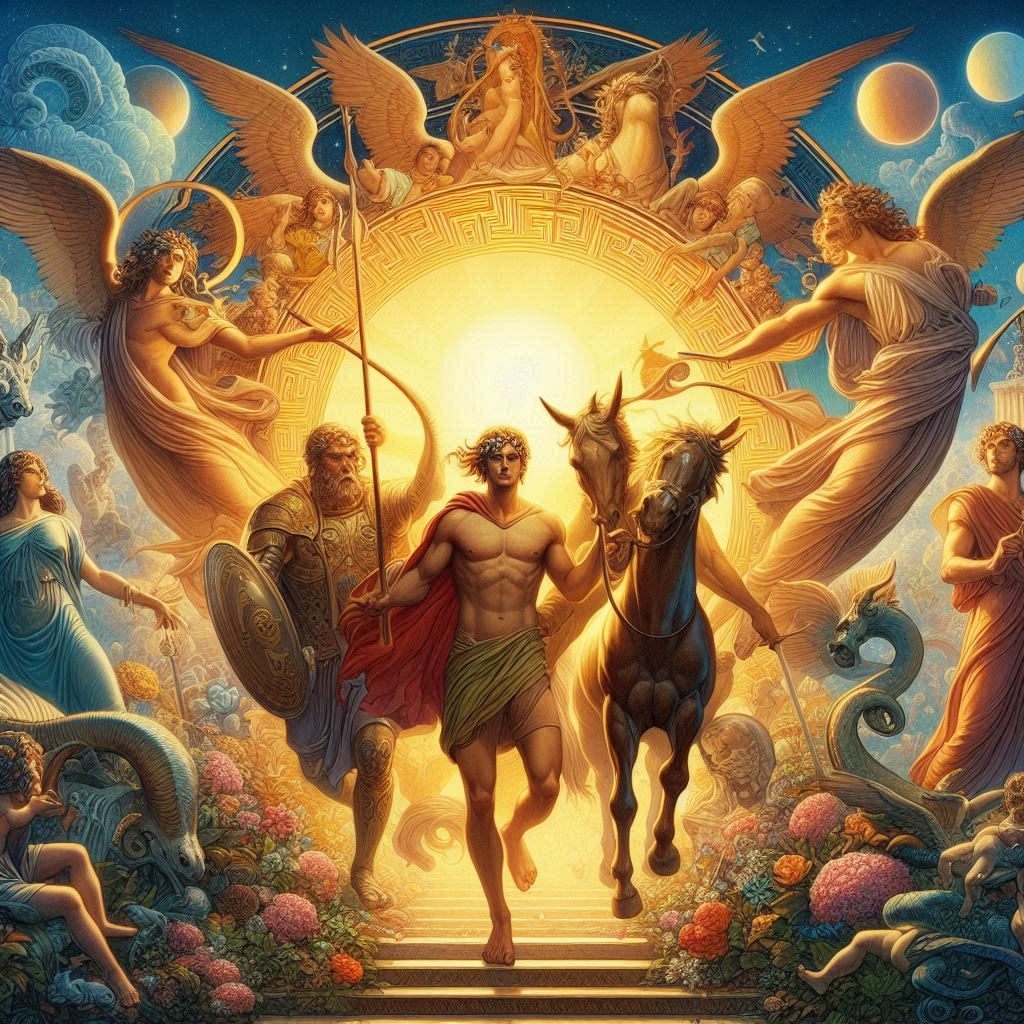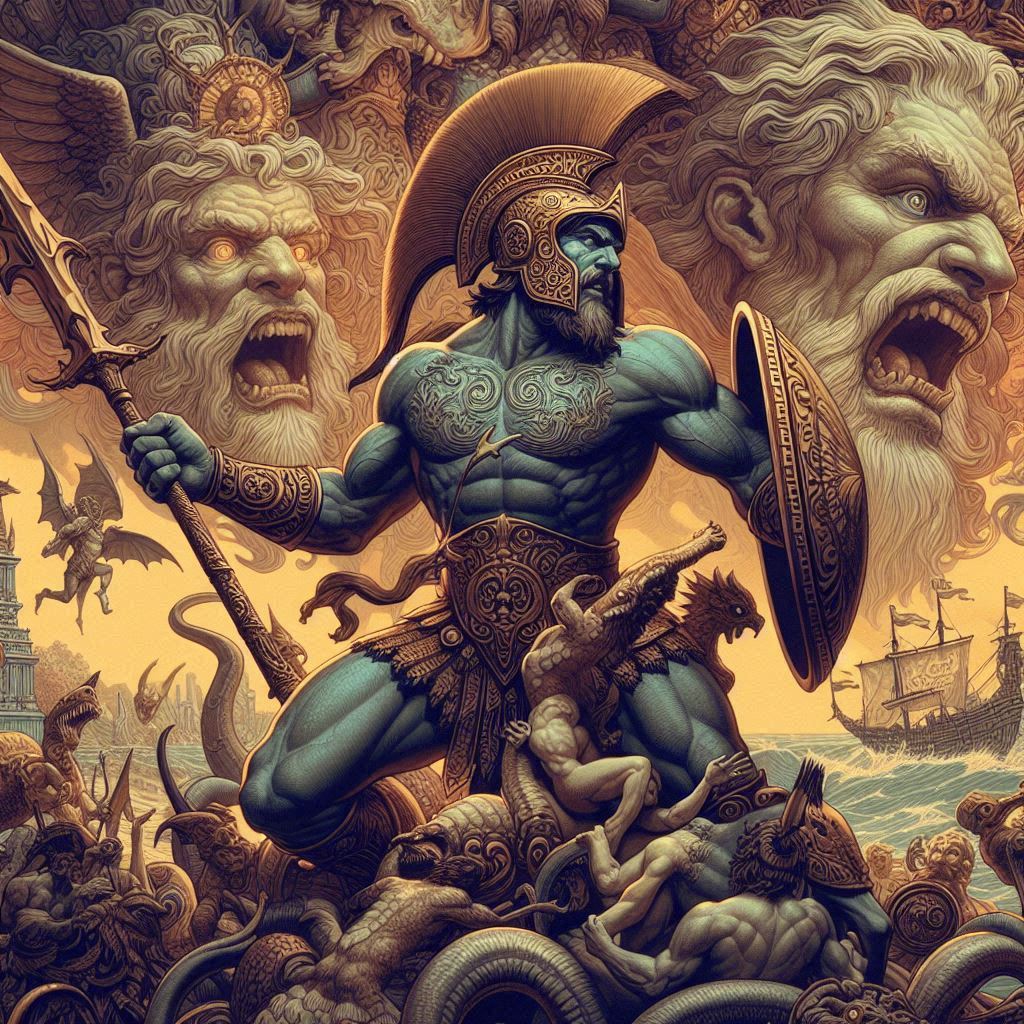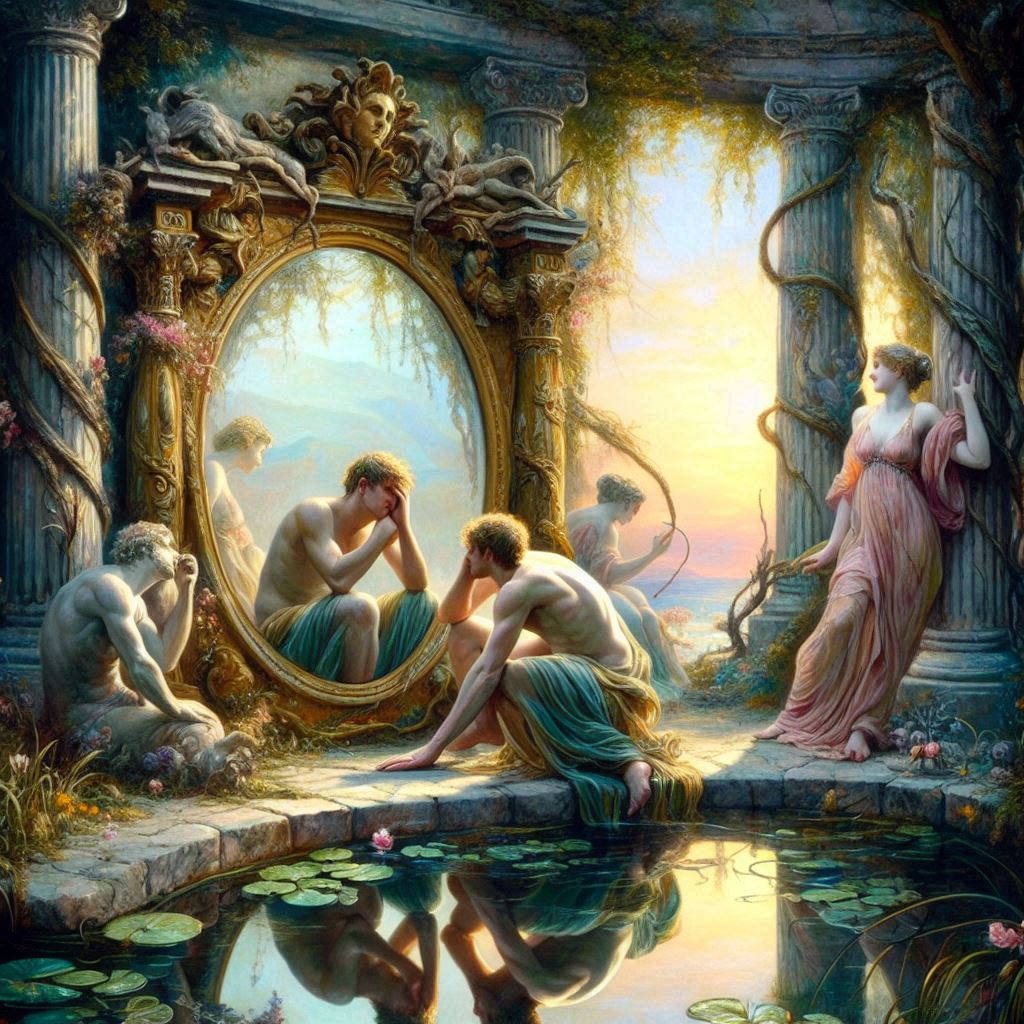Greek mythology is rich with tales of legendary beasts that embody the forces of nature, chaos, and the supernatural. These creatures, ranging from fearsome monsters to enigmatic beings, play significant roles in shaping the myths, legends, and heroes of ancient Greece. Among these legendary beasts, the Nemean Lion stands out as a formidable adversary, along with other iconic creatures such as the Hydra, the Sphinx, and the Chimera. Exploring the myths and symbolism of these legendary beasts offers insights into ancient Greek beliefs about heroism, courage, and the eternal struggle between humans and monsters.
The Nemean Lion, known for its impenetrable hide and savage nature, is a creature of mythological renown that terrorized the region of Nemea in ancient Greece. According to legend, the lion’s hide was impervious to weapons, rendering it invulnerable to conventional attacks. Its reign of terror instilled fear among the people, prompting them to seek a champion who could vanquish the beast and restore peace to the land.
Enter Heracles, the renowned hero of Greek mythology whose Twelve Labors are among the most famous feats of heroism in ancient lore. As part of his labors, Heracles is tasked with slaying the Nemean Lion, a task that proves to be a formidable challenge due to the creature’s legendary resilience and strength.
Armed with his wits, courage, and divine strength bestowed upon him by Zeus, Heracles confronts the Nemean Lion in its lair, a dark and treacherous cave. Traditional weapons prove ineffective against the lion’s impenetrable hide, forcing Heracles to rely on his ingenuity and physical prowess to overcome the beast.
In one version of the myth, Heracles uses his bare hands to strangle the lion, taking advantage of its vulnerability in close combat. Another version of the myth recounts how Heracles, unable to pierce the lion’s hide with conventional weapons, uses his club or a blade to stun the beast before delivering the fatal blow.
Upon slaying the Nemean Lion, Heracles skins the creature and wears its impervious hide as a trophy, symbolizing his triumph over adversity and his status as a legendary hero. The myth of the Nemean Lion showcases themes of courage, resilience, and the indomitable spirit of heroism, as Heracles overcomes an insurmountable challenge through skill, determination, and divine favor.
Another legendary beast of Greek mythology is the Hydra, a multi-headed serpent-like creature that dwelled in the swamps of Lerna. The Hydra’s most notable feature was its ability to regenerate heads, making it a fearsome and virtually invincible opponent. According to myth, the Hydra’s lair was guarded by the giant crab Karkinos, adding an additional layer of challenge to those who sought to confront the beast.
In one of his Twelve Labors, Heracles faces the Hydra as part of his penance for the murder of his family in a fit of madness. Armed with his club and wits, Heracles confronts the Hydra in its lair, only to discover the creature’s formidable ability to regenerate heads when one is severed. To overcome this challenge, Heracles enlists the aid of his nephew Iolaus, who cauterizes each neck stump with fire to prevent new heads from growing.
The battle against the Hydra is a grueling and epic struggle, as Heracles and Iolaus face not only the creature’s physical might but also the constant threat of its regenerative powers. With perseverance and strategic thinking, Heracles manages to defeat the Hydra by severing its heads and preventing their regrowth, culminating in a decisive victory for the hero.
The myth of the Hydra embodies themes of resilience, adaptability, and the triumph of intellect over brute strength. Heracles’s victory over the Hydra showcases his resourcefulness and cunning in overcoming seemingly insurmountable challenges, setting a precedent for heroism and ingenuity in the face of adversity.
Another iconic creature of Greek mythology is the Sphinx, a mythical creature with the body of a lion, the wings of a bird, and the head of a human. The Sphinx is known for its enigmatic nature and riddles, which it poses to travelers passing through its domain. According to myth, those who fail to answer the Sphinx’s riddle are devoured by the creature, adding an element of danger and mystery to its legend.
The most famous encounter with the Sphinx is recounted in the myth of Oedipus, the tragic hero of Greek mythology. Oedipus encounters the Sphinx on the road to Thebes, where the creature challenges him with the riddle, “What walks on four legs in the morning, two legs at noon, and three legs in the evening?” Oedipus correctly answers that it is a man, who crawls on all fours as a baby, walks on two legs as an adult, and uses a cane in old age.
By solving the Sphinx’s riddle, Oedipus not only saves himself from the creature’s wrath but also frees the people of Thebes from the Sphinx’s reign of terror. The myth of the Sphinx highlights themes of intellect, wisdom, and the power of knowledge in overcoming adversity.
The Chimera is another legendary creature of Greek mythology, often depicted as a monstrous hybrid with the body of a lion, the head of a goat arising from its back, and a serpent’s tail. The Chimera’s fearsome appearance and deadly breath made it a formidable opponent, challenging heroes and adventurers who sought to confront the creature.
According to myth, the Chimera was slain by the hero Bellerophon, who rode the winged horse Pegasus into battle against the beast. Armed with a spear tipped with lead, Bellerophon attacks the Chimera from above, piercing its throat and slaying the creature in a dramatic confrontation. The myth of the Chimera showcases themes of bravery, heroism, and the triumph of good over evil.
Other legendary beasts of Greek mythology include the Cerberus, a multi-headed dog that guards the entrance to the underworld; the Minotaur, a monstrous creature with the body of a man and the head of a bull; the Harpies, winged spirits of wind and storm that torment the wicked; and the Centaurs, half-human, half-horse beings known for their wild and unruly behavior.
These legendary beasts of Greek mythology embody the ancient Greeks’ fascination with the supernatural, the monstrous, and the divine. They serve as symbols of the natural world’s power and unpredictability, as well as metaphors for human fears, desires, and struggles. The myths and legends surrounding these creatures continue to captivate and inspire audiences today, reminding us of the enduring allure and complexity of ancient mythology.
